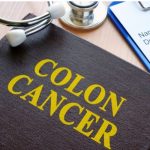A Band of Tightness Under breasts: 6 Causes Explained.
Our content is not intended nor recommended as a substitute for medical advice by your doctor. Use for informational purposes only.
A sense of tight band under the breast can arise from either your chest organs or your abdomen. Common causes include functional dyspepsia, irritable bowel syndrome, gastroparesis, coronary heart disease, gallbladder diseases, etc.
1 . Functional Dyspepsia.
Up to 20% of the world population (one in every five persons) suffer from functional dyspepsia (reference).
Functional dyspepsia or Non-ulcer dyspepsia is a condition in which you feel discomfort, fullness, or pain in the upper stomach area (epigastric). The symptoms of dyspepsia are often related to food (after meals).
The exact cause of functional dyspepsia is still unknown. Your doctor will not find gastritis or stomach ulcers. Possible causes include (reference):
- Infections such as H. pylori bacteria.
- Psychological factors play a significant role in functional dyspepsia (constant stress, worry, anxiety, etc.).
- Motility diseases of the stomach such as gastroparesis.
- Hypersensitivity of your digestive system (Low tolerance to pain).
- Alternations in the gut microbiota (organisms naturally living inside your digestive system).
- Duodenal inflammation.
Symptoms are suggestive of functional dyspepsia.
- A feeling of a tight band in the upper stomach area or under the breasts.
- Discomfort or a tight band or fullness in the upper abdomen below the breasts is mainly after eating.
- Early satiety (sense of fullness after eating very little.
- Nausea.
- Epigastric pain.
Functional dyspepsia is a disease of exclusion. You cannot diagnose yourself based on symptoms. Instead, your doctor must first exclude similar conditions such as peptic ulcer, chronic gastritis, and IBS.
Unfortunately, there is no permanent cure for functional dyspepsia. All treatments aim to control the symptoms. However, it can go away on its own after months or years.
Functional dyspepsia is probably the most common cause of the feeling of a tight band under the breasts.
2. Coronary heart disease.
A less common but severe and potentially life-threatening condition is a decreased blood supply to the heart. The heart muscle itself needs blood to contract. The blood is delivered through the coronary arteries to the heart muscle.
Any partial or complete occlusion of a coronary artery can lead to anginal pain (heart attack).
Who are at high risk of getting coronary heart disease:
- Older ages (often above 40).
- Males are more commonly affected than females.
- Smoking.
- Increased blood cholesterol and lipids (hyperlipidemia).
- Family history of coronary heart disease.
- Faulty diet habits such as overeating, fatty, and fast food.
- Physical inactivity.
- Obesity.
- Emotional stress.
- Extreme cold or heat weather.
The character of coronary heart disease pain (anginal pain):
- A pressing, squeezing, or crushing pain, usually in the chest under your breastbone or as a tight band under your breasts.
- Pain that may also occur in your upper back, both arms, neck, or ear lobes
- Chest pain that spreads to your arms, shoulders, jaw, neck, or back
- Shortness of breath.
- Chest pain is triggered by physical activity and relieved by rest.
- The tightness under the breast doesn’t respond to stomach ulcer medication. Instead, it responds to anti-ischemic drugs such as sublingual nitrates.
- Fainting and coma in severe cases.
- Awareness of heartbeats.
Chest pain or tightness that starts suddenly and then disappears within minutes is suspicious of coronary heart disease. Call your doctor immediately or go to the ER if you experience such criteria and have risk factors.
3. Gastroparesis.
Gastroparesis is a motility disorder of your stomach. There is a loss or decrease in your stomach motility with gastroparesis, causing delayed gastric emptying (reference).
Gastroparesis can cause bloating, epigastric discomfort, the feeling of a tight band under breasts or in the upper stomach, and burping.
Gastroparesis is not uncommon. It has a high incidence in people with diabetes mellitus.
Some types of gastroparesis other than diabetic gastroparesis also exist. For example, Idiopathic gastroparesis, Post-surgical gastroparesis.
Symptoms of Gastroparesis:
- Feeling of fullness as soon as you start eating.
- Bloating.
- Excessive gas and burping.
- A feeling of the tight band under breasts and shortness of breath after meals.
- Nausea lost appetite.
- Vague, dull pain may also occur in the upper part of your abdomen.
4. Gallbladder diseases.
The gallbladder lies on the right side of the upper abdomen. However, diseases affecting your gallbladder can result in the whole upper part of your abdomen. Sometimes, It presents with upper-middle abdominal pain or chest pain and tightness.
Causes of gallbladder pain include:
- Gallbladder stones (commonest).
- Gallbladder inflammation: without the presence of stones. The most common cause of inflammation is infections with viruses or bacteria.
- Bile duct blockage (connects the gallbladder to the duodenum): by a stone, a kink, or a tumor.
- Blood vessel diseases: damage of blood vessels supplying the gallbladder can result in gallbladder pain (rare).
Symptoms of gallbladder pain:
- Severe pain in your upper right or upper middle part of your abdomen. ‘
- The pain starts as prolonged colic that builds up and may last for up to 30 minutes.
- The pain resolves partially. Then it starts to worsen again (attacks of pain lasting anytime between 10 and 30 minutes on average).
- Pain is often triggered when you eat a large fatty meal.
- Severe nausea after eating.
- Sometimes, severe vomiting occurs after eating.
- The biliary colic can be very intense, radiates to your back and the back of the right shoulder.
- However, People with gallstone disease may have attacks of atypical biliary colic such as tight band feeling around their upper stomach area or in the chest (right side or under breasts).
5. Gastritis and peptic ulcer disease.
Gastritis is the inflammation of the lining of your stomach. Peptic ulcer disease is a result of gastritis. The development of an ulcer in your stomach or duodenum is called peptic ulcer disease (PUD).
Gastritis and PUD are very common. Around 50% of people suffer from gastritis at some point in their life (reference).
Acute and chronic gastritis is the most common cause of upper-middle stomach pain after eating.
Causes:
- Drug-induced gastritis and PUD: most commonly, Non-steroidal antiinflammatory drugs as ibuprofen and diclofenac.
- H. Pylori infection.
- Food: spicy foods, caffeine, alcoholo, fats, and acidic foods.
- Less frequent causes of gastritis include immune-mediated gastritis, bile reflux, iron supplements, Crohn’s disease, and autoimmune diseases.
Symptoms:
- Pain in the epigastric area (upper middle part of your abdomen).
- The pain is burning, aching, or gnawing in nature.
- With chronic gastritis and stomach ulcers, the pain starts shortly after eating.
- With duodenal ulcers, the pain is relieved by eating!
- Nausea, sometimes vomiting after eating.
- Fullness or tight band sensation in the upper abdomen or the chest (below breasts).
- Chronic gastritis usually follows an intermittent course with the recurrence of symptoms for months and years.
- With peptic ulcer disease, the symptoms are the same but more extreme.
- PUD can cause vomiting of blood (hematemesis) or passage of dark blackish stool (melena) when it bleeds.
6. GERD and Hiatal Hernia.
The main symptom of GERD (gastroesophageal reflux disease) is heartburn. Burning chest sensation (heartburn) or regurgitation of foods or fluids into your throat or mouth suggests GERD.
GERD can cause a different type of chest pain than classic heartburn. It is called GERD-related chest pain.
This type of pain is called GERD-related chest pain; it has the following characters (reference):
- Squeezing or heaviness in the front of your chest (behind the sternal bone).
- It can also be felt as tightness around the chest (below the breasts).
- The pain radiates to the back, jaw, or two arms (similar to heart attack pain).
- The pain lasts anywhere from minutes to hours.
- The pain resolves spontaneously or with antacids.
Learn more about GERD and heartburn.
7. Others
- Chronic cough.
- Pleurisy (inflammation of the fibrous envelop of the lungs).
- Bone diseases such as osteoporosis affecting the ribs can also cause tight band feeling under breasts.
- Intestinal Gas
- Enlarged abdominal organs
- Pregnancy.
- MS (multiple sclerosis).
- Chronic lung diseases such as chronic obstructive pulmonary disease and bronchial asthma.
- Evidence-based
- Written by a doctor.






